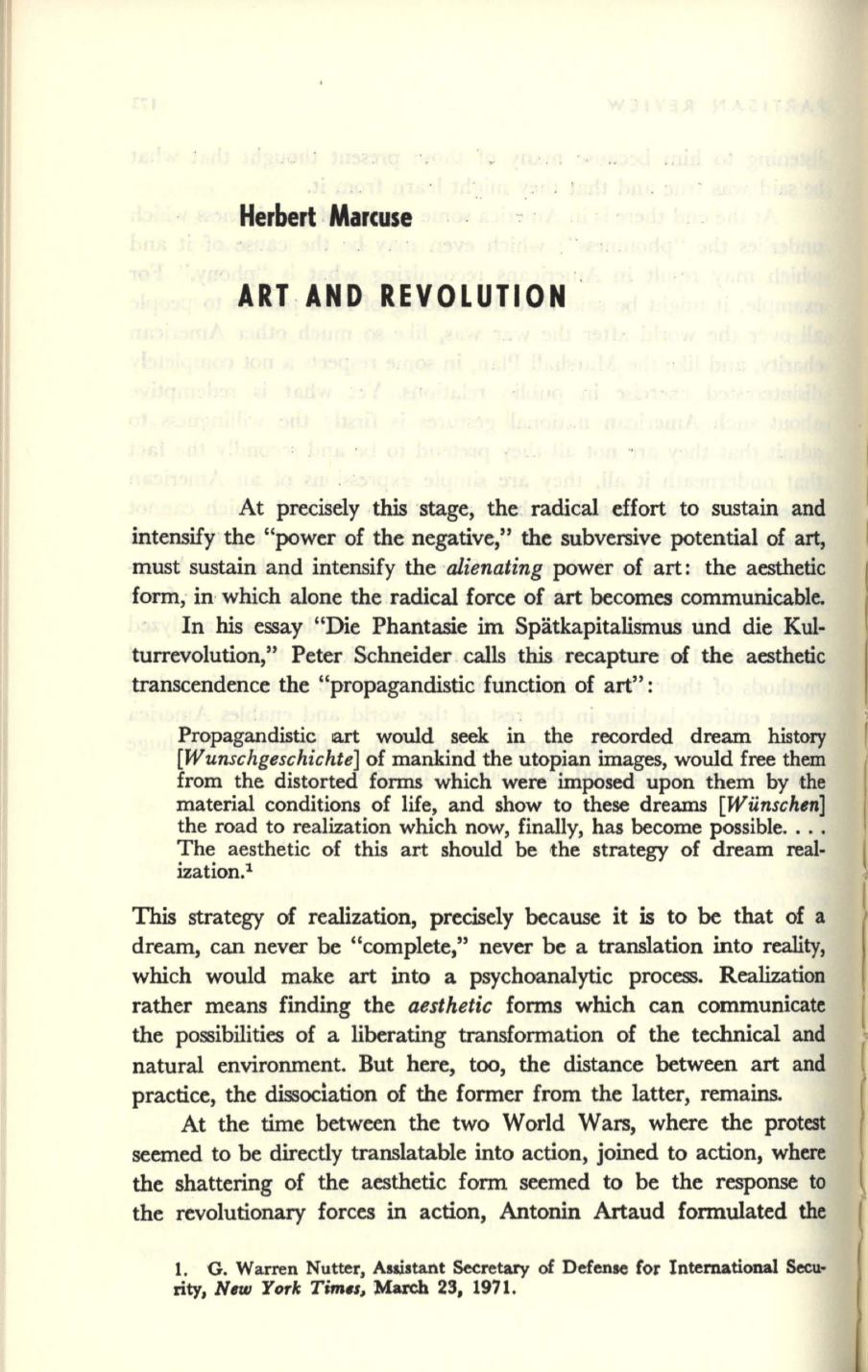
Herbert Marcuse
ART AND REYOLUTION
At precisely .this stage, the radical effort to sustain and
intensify the "power of the negative,"
the
subversive potential of art,
must sustain and intensify the
alienating
power of art: the aesthetic
form; in·which alone the radical force of art becomes communicable.
In his essay "Die Phantasie
im
Spatkapitalismus und die Kul–
turrevolution," Peter Schneider
calls
this recapture of the aesthetic
transcendence the "propagandistic function of art":
Propagandistic
art
would seek in the recorded dream history
[Wunschgeschichte]
of mankind the utopian images, would free
them
from the distorted forms which were imposed upon them by
'the
material conditions of life, and show to these dreams
[Wiinschln]
the road to realization which now, finally, has become possible....
The aesthetic of this art should be the strategy of dream real–
ization.
1
This strategy of realization, precisely because it
is
to
be
that of a
dream, can never be "complete," never be a translation into reality,
which would make
art
into a psychoanalytic process. Realization
rather means finding the
aesthetic
forms which can communicate
the po&!ibilities of a liberating transformation of the technical and
natural environment. But here, too, the distance between art and
practice, the dissociation of the former from the latter, remains.
At the time between the two World Wars, where the protest
seemed to be directly translatable into action, joined to action, where
the shattering of the aesthetic form seemed to
be
the response to
the revolutionary forces in action, Antonin Artaud formulated the
1. G. Warren Nutter, Awstant Secretary
of
Defense Cor International Secu–
rity,
N.w York
Tim.l,
March
23, 1971.


